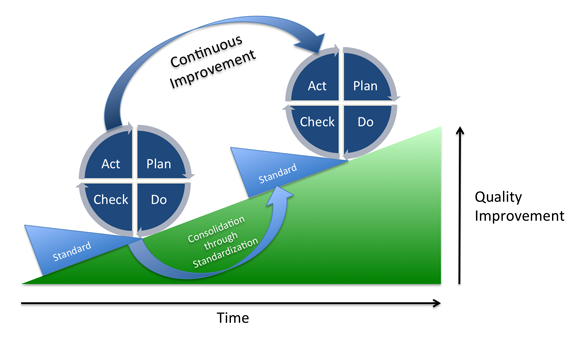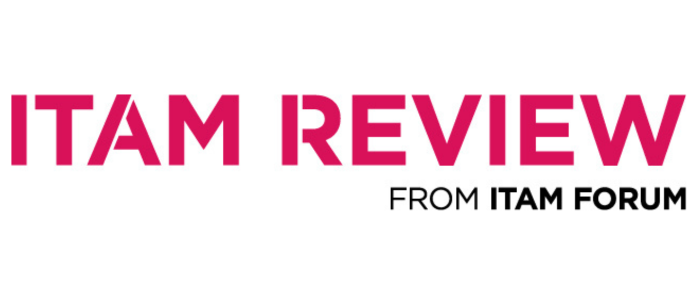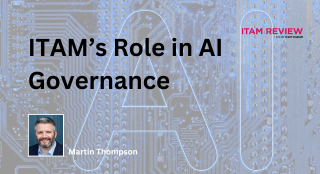Quick Guide to ITAM CSI

CSI , no not Crime Scene Investigation but CONTINUAL SERVICE IMPROVEMENT!
This article provides a quick introduction to ITAM CSI and the value it brings in maintaining momentum in your ITAM practice.
We cover CSI in module 9: REPORTING, of the ITAM Review 12 Box Training Course. It is an essential concept to understand when developing reporting that people actually want to read and maintaining momentum and engagement.
What is CSI?
No, not blood on the carpet and DNA samples in Miami… CSI in the context of this article stands for Continual or Continuous Service Improvement. It is a concept borrowed from ITIL and the Service Management arena that encourages a spirit of continual improvement.
“Continual service improvement, defined in the ITIL continual service improvement volume, aims to align and realign IT services to changing business needs by identifying and implementing improvements to the IT services that support the business processes.” ~ Wikipedia
Why ITAM CSI?
CSI is an important concept to understand in a fast moving and complex arena like IT. The old adage says that a plane flying between two cities is off-course 99% of the time, but is constantly correcting itself. The same approach can be considered for your ITAM practice, you might have the most impressive and bulletproof business plan at kick-off, but it needs to evolve over time as your business and technology changes.
Why do we need a CSI approach for ITAM?
- ITAM takes time – A world class ITAM practice is not built over night and may take many years to perfect. In the meantime the goal posts are likely to change, the ITAM leader has to have the acuity to change course mid-way through the process, potentially many times over.
- Businesses constantly evolve – Goals and business priorities change. What was mission critical in January becomes old news in February. Businesses get acquired, divested and they expand and contract.
- ITAM should be responsive – Modern ITAM should be iterative and flexible. It should be modular and listen to feedback so it can adjust course accordingly. See this video from Tony Crawley on ‘Talking ITAM to the CIO‘, which covers an agile approach.
- Communication needs to be relevant – Finally, ITAM communications should be relevant and current to be successful. An ITAM program that spouts outdated direction will be seen as irrelevant and out of touch.
ITAM CSI implementation
OK, so much for the theory – how do we go about doing it?
The Deming cycle is commonly cited as a methodology to consider for CSI. In layman’s terms: Build a feedback loop for how you are doing and listen to it.
The Deming cycle suggests four major steps:
- PLAN – Plan what improvement is required in your ITAM practice to improve efficiency, effectiveness or financial impact
- DO – Execute the plan as a project with a specific goal
- CHECK – Verify success via measurable metrics or perhaps an audit to check accuracy
- ACT – Act upon any findings or lessons learnt
- REPEAT – Constantly repeat this cycle looking for new areas of improvement and alignment with business priorities
The goal is to steadily improve your ITAM practice over time in iterative steps, increasingly quality, accuracy and impact of your efforts as per the diagram below. We cover how to actually do this in practice using real life examples during module 9, but an example might be audit responsiveness, gradually improving by listening to feedback.

ITAM CSI: A gradual improvement to ITAM practice and processes
Learn more about CSI, reporting, keeping stakeholders engaged and keeping your ITAM practice relevant in module 9 of the 12 box training course.
- Image credit – CSI
- Image credit – PDSA
Can’t find what you’re looking for?
More from ITAM News & Analysis
-
The Allure of the Cloud: What are We Chasing?
When I ask ITAM professionals about their transition to the cloud, the responses are often similar. “It wasn’t my decision.” It’s striking how many people feel this way—decisions about moving from on-premises solutions to the cloud ... -
The M&S Cyberattack: How IT Asset Management Can Make or Break Your Recovery
Marks & Spencer (M&S), the iconic UK retailer, recently became the latest high-profile victim of a devastating cyberattack. Fellow retailers The Co-Op and Harrods were also attacked. Recent reports suggest the rapid action at the Co-Op ... -
AI in ITAM: Insightful Signals from the Front Line
During our Wisdom Unplugged USA event in New York in March 2025, we engaged ITAM professionals with three targeted polling questions to uncover their current thinking on Artificial Intelligence—what concerns them, where they see opportunity, and ...
Podcast
ITAM training
Similar Posts
-
The M&S Cyberattack: How IT Asset Management Can Make or Break Your Recovery
Marks & Spencer (M&S), the iconic UK retailer, recently became the latest high-profile victim of a devastating cyberattack. Fellow retailers The Co-Op and Harrods were also attacked. Recent reports suggest the rapid action at the Co-Op ... -
AI in ITAM: Insightful Signals from the Front Line
During our Wisdom Unplugged USA event in New York in March 2025, we engaged ITAM professionals with three targeted polling questions to uncover their current thinking on Artificial Intelligence—what concerns them, where they see opportunity, and ... -
How ISO/IEC 19770-1 Can Help Meet FFIEC Requirements
In the world of ITAM, the regulatory spotlight continues to intensify, especially for financial institutions facing increasing scrutiny from regulatory bodies due to the growing importance of IT in operational resilience, service delivery, and risk management. ... -
An Introduction to Scope 4 Emissions
Executive Summary For ITAM teams, sustainability is a core responsibility and opportunity. Managing hardware, software, and cloud resources now comes with the ability to track, reduce, and report carbon emissions. Understanding emission scopes—from direct operational emissions ...




